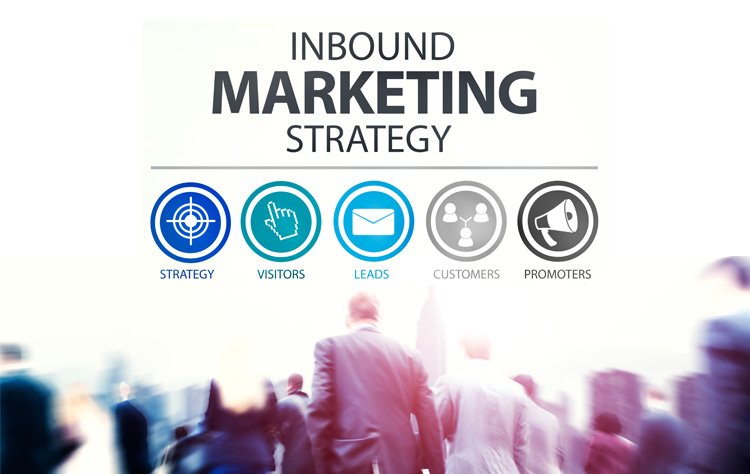Originally, marketing envisions two approaches – push and pull. Push marketing involves efforts to convince consumers to purchase your products. This is the conventional type of marketing and it focuses on products and their features. Pull marketing, on the other hand, focuses on values and brand awareness. It involves activities that pull customers towards the brand by using various strategies.
Inbound marketing includes multiple strategies of pull marketing like content marketing, blogs, events, search engine optimization (SEO), social media, videos, and more. By effectively using these strategies, businesses improve their brand awareness and value.
Inbound marketing is THE marketing that is relevant and optimal in this digital world we’re living in.
Inbound deals with aspects like organic search, organic lead, organic reach, etc. Organic here refers to unpaid advertisements and content that drive traffic to your business with time. Organic marketing includes anything you don’t pay for directly, such as blog posts, case studies, white papers, social media updates, video sharing, etc.
A study by Marketing Sherpa proves this claim; it showed that “83% of online tech buyers found their vendor via Google search.”
Another relevant statistic brought by Content Marketing Institute states that 80% of business decision makers favor getting brand information via articles rather than by way of paid advertisements.
Also, according to the demand gen report 2019, 73% of B2B consumers reported consuming between three and seven pieces of content before speaking with a salesperson.
According to HubSpot, 70% of marketers are actively investing in content marketing as part of their business strategy. 82% of marketers believe that inbound practices generate high-quality leads. It was also revealed that Inbound leads cost 61% less on average than outbound leads.
Such numbers prove how efficient and pertinent inbound strategies are for today’s businesses. So, let’s delve deeper and decode the benefits of inbound marketing.
Promotes better brand awareness
Brand awareness is one of the biggest challenges for businesses. If no one knows you exist, your unrivaled products and services don’t matter. So, the value of your business is proportional to how aware the consumers are of your existence. This important aspect can be tackled optimally using inbound marketing.
Considering inbound is a type of pull marketing, its activities focus on attracting consumer attention towards your brand. By using timely, well-crafted, and researched content (blogs, advertisements, offers, etc.) it is possible to approach your target audience in the best way possible without annoying or interrupting them.
This causes better sales prospects in the long run. Inbound is a relevant strategy for new businesses and also helps promote newer products of established businesses.
Asserts credibility
Inbound allows you to answer the popular questions being asked by consumers. Also, A consistent and effective inbound marketing campaign allows you to find consumers early on in the sales funnel. So, solving their pain points and guiding them using clear call-to-actions can establish your credibility and competence as a major player in your niche.
Improved utilization of resources
Effective utilization of resources is a basic premise for the success of businesses. Inbound marketing enables you to use your resources in the most optimal way to serve your target audience. Since the demands and trends of your prospects form the core of inbound practices, there is no irrelevant activity or wasted effort.
Many observations prove that inbound marketing aligns with the best interests of the sales team and promotes cognizance between the two major departments that influence your business’s market performance.
Also, in inbound marketing, there is no need for repeated investments because the information gathered today can be used as insights tomorrow. So, when users leave you their data it opens many paths for you to engage them in the future.
On a whole, inbound practices profitably affect business bottom lines with minimal investment and no wasted resources.
Enables market analysis
The technical side of inbound marketing is probably the biggest blessing bestowed on the field of sales and marketing. With a properly executed inbound strategy, you’ll be close to possessing the supernatural gifts of clairvoyance and telepathy.
Technologies like analytics and big data append unprecedented benefits to marketing. By making every activity measurable, they allow you to quantify your best practices and distinguish them from your worst. They also equip you with invaluable insights that can serve as the blueprint for your business strategies.
Practices like SEO, SEM, and methods to understand your organic reach are all results of these analytical tools. They don’t just help you in conquering the digital realm but also reflect your progress in material markets.
Helps in acquiring loyalty
The major feature of inbound marketing is focused on value rather than a product. This means that once you satiate a prospective consumer i.e. if he finds his needs fulfilled by your content or website, you are earning loyalty.
Online culture encourages the habit of advocacy. So, a consumer who is a satisfied recipient of your inbound marketing strategies like content, video, advertising, etc, will unconsciously become an ambassador for your brand.
This helps in achieving two critical tasks – to gather a loyal consumer base and reduce costs of acquiring new customers.
On considering these benefits, “If everything you say is true, then why aren’t we hearing more success stories of inbound practices?” you might wonder.
However, the catch about inbound practices is that, as advantageous as they are, getting them right makes all the difference. There are a few frustrations associated with implementing inbound practices that tamper its prospects if approached inappropriately.
It is a long-term bet – Inbound marketing does yield valuable insights. However, the results don’t show up overnight. It is like you’re building a digital empire that is prospective in theory, practical in application, and competent in the future; but none of that really shows until your portfolio is solid. So, ‘Rome wasn’t built in a day’ is a conclusive expression that is pertinent to this point.
Time-consuming – It will definitely point you out to prospective leads. But, this will not happen as fast as you anticipate. Inbound marketing is a strategic and subjective effort. It is a confluence of many dynamic aspects whose functionalities are as time-consuming as they are efficient.
Requires extensive research – Inbound marketing is less like business and more like an art constructed with data. An effective inbound marketing campaign demands extraordinary efforts in market research, gathering data insights from analytical tools, brainstorming solutions for current pain points in the market, etc. Since inbound is all about brains, there must be enough matter to drive a competent marketing campaign.
Results are proportional to efforts and expertise
The results of inbound marketing will only ever be as good as your online presence. If you fail in building a decent website, or blog, or content services, there is no helping your business in nailing inbound marketing. So, focused efforts and relevant expertise are pertinent to succeed in reaping the benefits of inbound marketing.
Like this, Inbound marketing practices can drive your business to success, provided you exercise discretion in their utility and implementation.






